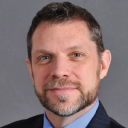Back and forth, hope traded places with a sense of frustration throughout the AIDS Philanthropy Summit, convened by Funders Concerned about AIDS (FCAA) in Washington DC, 8 and 9 December 2014.
Since 2009, this annual gathering has brought together major players within the HIV/AIDS funding community, principally US-based but increasingly also from Europe and Africa, for rich dialogue on the state of the HIV/AIDS pandemic and how private and public funding is responding.
There is certainly much that brings hope: promising advances in prevention and treatment, a slowing of new transmissions in some of the hardest-hit places, and an increasing recognition of the intersectionality of HIV/AIDs and human rights, to name a few extremely positive macro trends.
Against this, though, comes a legitimate sense of frustration. Among the more troubling trends:
- Within the global public at large, the positive advances in HIV/AIDS prevention and treatment may be leading some to believe that the crisis has more or less been addressed and that we are close to achieving the goal of an ‘AIDS-Free Generation’, a goal that is in fact many, many years – and many, many billions of dollars in investment –
- With this sense of complacency has come a drop in funding: FCAA’s most recent tracking report, Philanthropic Support to Address HIV/AIDS in 2013, found that HIV/AIDS funding among US- and EU-based foundations is at its lowest level since 2007. FCAA records some 60 US-based foundations that ceased funding HIV/AIDS work in 2013 alone.
- A small set of countries have recently advanced from low-income to middle-income. With this overall economic advancement will come a significant drop in official aid for HIV/AIDS prevention and treatment – even among those newly minted middle-income countries where HIV/AIDS remains a significant health crisis.
- In a growing number of jurisdictions there has been an increasing criminalization of identity – not just in taking drugs or in engaging in homosexual sex, but in being a drug user or a man who has sex with men. Eighty-six countries criminalize gay sex, for example; seven of these include the death penalty. This extreme degree of criminalization adds unprecedented complications to working with some of the communities most affected by HIV/AIDS.
These opportunities and challenges made for very rich programme content at the Summit. Plenary sessions generally looked at issues of collaboration and scale. A partnership between the Elton John AIDS Foundation and PEPFAR, a US government HIV/AIDS funding agency, was among collaborative efforts highlighted, each entity bringing its own unique assets to the table and together leveraging bigger impact.
The need to deploy multiple strategies in the fight against HIV/AIDS was also an important plenary theme, as was the value of recognizing the intersectionality of diverse issues in the HIV/AIDS space. In this vein, a new collaboration between FCAA and the International Human Rights Funders Group was announced, an effort to support strategic work at the intersection of HIV/AIDS and human rights.
Breakout sessions followed two tracks, US and global. I attended the global track, which included sessions on addressing violence against criminalized women affected by HIV/AIDS, advancing the health and rights of LGBT communities, and strategic litigation as an important tool in our toolbox.
I have attended more philanthropy conferences than I can remember. With regard to issue content, this one was among the best I can recall. The calibre of attendees was exceptionally high. Many were individuals who have dedicated most or all of their professional lives to the field of HIV/AIDS. As someone from outside this world, I sometimes felt a bit lost in the weeds. But I was not shy to ask questions, and I found attendees respectful of my learning curve and happy to share their knowledge.
2015 and beyond are expected to be challenging years for the HIV/AIDS community. The UN Millennium Development Goals, expiring in 2015, have a specific commitment on HIV/AIDS; the Sustainable Development Goals, set to replace them, do not include HIV/AIDS-specific goals, creating great uncertainty about how HIV/AIDS will be prioritized in the future.
Additionally, the Global Plan for the Elimination of Mother to Child Transmission concludes in 2015; maintaining a high level of focus and resourcing to this critical issue will be far more difficult.
While philanthropy represents but a small percentage of funding for the pandemic, it is often a very strategic and important one. I left the Summit feeling that this community, in part through the leadership of FCAA, is well positioned to respond.
Archived videos from the FCAA Summit are now available online here.
John Harvey is an independent global philanthropy professional.






Comments (0)